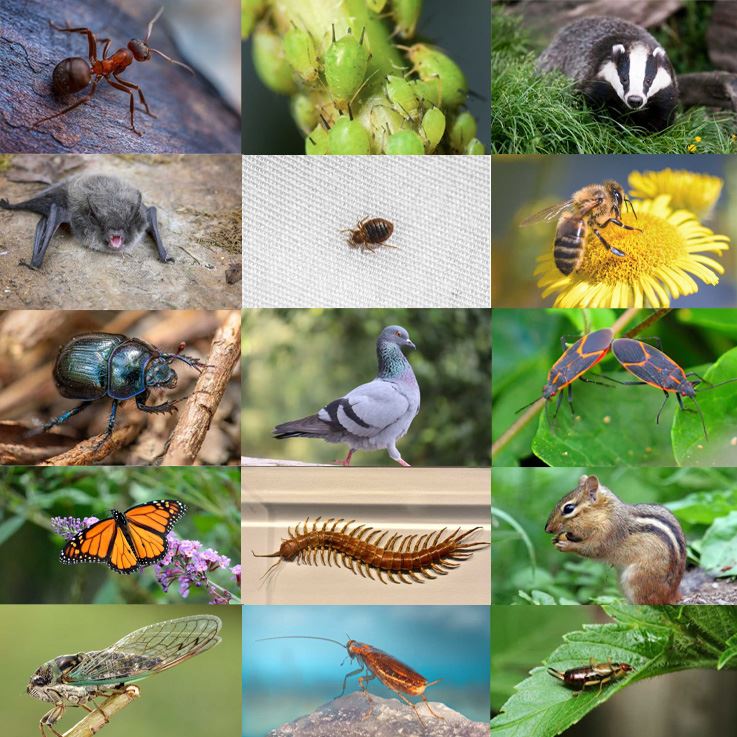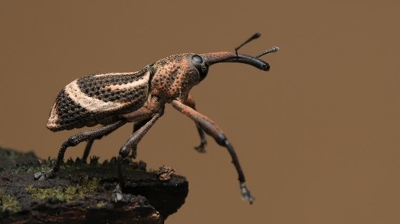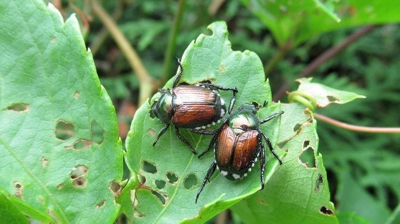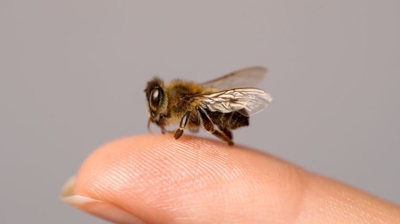
Ladybugs
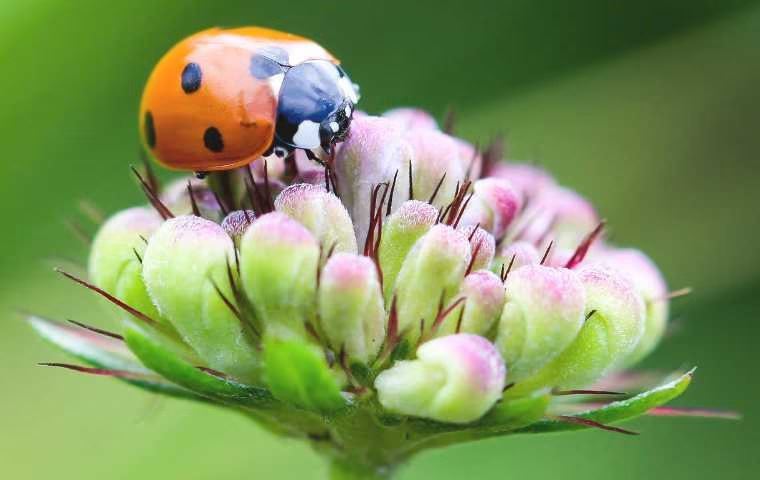
What Are Ladybugs?
Ladybugs, scientifically known as Coccinellidae, are a family of beetles that belong to the order Coleoptera. They are widely recognized for their distinctive and appealing appearance, characterized by their small, rounded bodies, typically red or orange in color, adorned with black spots. While this classic coloration is the most familiar, ladybugs can also be found in various other colors and patterns.
Ladybugs are beneficial insects in the ecosystem, primarily due to their voracious appetite for aphids and other garden pests. They play a crucial role in natural pest control, helping to keep populations of harmful insects in check. In fact, a single ladybug can consume hundreds of aphids in a day, making them valuable allies for farmers and gardeners.
The life cycle of a ladybug includes four stages: egg, larva, pupa, and adult. Ladybugs lay their eggs near aphid colonies or other food sources for their larvae. The larvae, often resembling tiny alligators, are also predators, feeding on aphids and other soft-bodied insects. After undergoing metamorphosis, they enter the pupal stage before emerging as adult ladybugs.
Ladybugs have a wide distribution and can be found on every continent except Antarctica. They are celebrated in many cultures for their symbolic significance, often representing good luck or protection from pests. These remarkable insects are not only fascinating but also play a vital role in maintaining ecological balance by helping to control pest populations in gardens, farms, and natural ecosystems.
Are Ladybugs Dangerous?
Ladybugs are generally considered beneficial insects due to their role in controlling pest populations in gardens and agricultural fields. However, in rare circumstances and specific contexts, they can be considered problematic or even potentially dangerous. Here are some ways in which ladybugs might be perceived as dangerous:
- Allergic Reactions: Some people may be allergic to ladybug secretions or their blood, which can result in skin rashes, itching, or even more severe allergic reactions. Although such allergies are rare, they can be dangerous for those who are sensitive.
- House Infestations: During the winter months, ladybugs often seek shelter inside homes, where they can become a nuisance. Large infestations can lead to structural damage or trigger allergies in some individuals, particularly in homes with ladybug allergies.
- Agricultural Pests: In certain regions, non-native ladybug species can become invasive and displace native ladybugs. For instance, the Asian lady beetle, Harmonia axyridis, can outcompete local species and disrupt local ecosystems, impacting biodiversity.
- Crop Damage: While ladybugs are generally considered beneficial to agriculture, in some cases, they may feed on crops such as grapes, creating economic challenges for vineyard owners. Their feeding can cause damage to fruit, leading to crop losses.
- Invasive Species: The introduction of non-native ladybug species, such as the Asian lady beetle mentioned earlier, can sometimes have negative consequences. These species may outcompete native ladybugs and disrupt local ecosystems.
- Human Health Risks: In rare cases, ladybugs may carry human pathogens, which can pose a minimal risk to human health, particularly if ladybugs come into contact with food or open wounds.
These instances of ladybugs being considered dangerous are relatively uncommon, and they do not negate the overall beneficial role that ladybugs play in controlling pest populations and contributing to the balance of ecosystems. Proper pest management and prevention strategies can help mitigate potential issues associated with ladybugs in specific situations.
Learn more: Do Ladybugs Bite?
Learn more: Are Ladybugs Poisonous?
Learn more: Are Ladybugs Harmful?
Types of Ladybugs
Ladybugs are a diverse group of beetles, with more than 5,000 different species known worldwide. While many species of ladybugs share similar characteristics such as their distinctive body shape and bright coloring, there is a significant amount of variation among different types of ladybugs. Here are some of the most common types of ladybugs:
- Seven-Spotted Ladybug: This is perhaps the most well-known species of ladybug, featuring a bright red body with seven black spots on its wings. This type of ladybug is native to Europe, but has since been introduced to other parts of the world, including North America.
- Asian Lady Beetle: Also known as the Harlequin ladybug, this species is native to Asia but has become established in many other parts of the world, including North America. The Asian lady beetle has a variable appearance, with some individuals featuring black spots on a red background, while others have a more orange or yellow hue.
- Two-Spotted Ladybug: This species is characterized by its red body and two black spots on its wings. It is found in many parts of the world, including North America, Europe, and Asia.
- Convergent Ladybug: This species is easily identified by its red body and white spots on its wings, which converge towards its head. It is found throughout North America and is a common garden visitor.
- Pink-Spotted Ladybug: This type of ladybug is native to Australia and features a pink body with black spots. It is relatively small, measuring only about 3mm in length.
- Mexican Bean Beetle: This species is native to Mexico and parts of the United States, where it is considered a pest of bean crops. It is similar in appearance to other ladybugs, but has a distinctive coloration with yellow-orange bodies and black spots.
- Cream-Spotted Ladybug: This species is native to Europe and Asia, but has been introduced to North America. It features a cream-colored body with black spots and is relatively small, measuring only about 4mm in length.
- Bamburgh Ladybird: This species is native to the United Kingdom and is characterized by its orange-red body and black spots. It is named after Bamburgh Castle, where it was first identified in the 1950s.
These are just a few examples of the many types of ladybugs that exist. Each species has its own unique characteristics, such as size, coloration, and preferred habitat. Despite their differences, ladybugs share many common traits, including their beneficial behavior as predators of plant-eating insects.
Learn more: What You Ought To Know About The Invasive Asian Lady Beetle
Learn more: Ladybugs vs Asian Lady Beetles
What Do Lady Bugs Look Like?
Ladybugs, also known as ladybirds in some regions, have a distinctive and easily recognizable appearance. They are typically small, round beetles with the following key physical characteristics:
- Size: Ladybugs are relatively small insects, with adults measuring around 0.1 to 0.4 inches (2.5 to 10 millimeters) in length.
- Shape: Their bodies are dome-shaped and typically oval or rounded, somewhat resembling a small button.
- Coloration: The most familiar ladybug species, such as the seven-spotted ladybug (Coccinella septempunctata), are red or orange with black spots. However, there are numerous species with varying color patterns. Some ladybugs are entirely black, while others may be yellow, brown, or even pink.
- Spot Patterns: Ladybugs are often recognized by the spots on their elytra (wing covers). The number and arrangement of spots can vary among species. For example, the common seven-spotted ladybug has seven distinct black spots on its red or orange elytra.
- Head and Antennae: Ladybugs have small heads relative to their body size. They typically have two short antennae on their heads.
- Legs: They have six legs, like all insects, and these legs are relatively short and adapted for walking.
- Wing Covers: Ladybugs have hardened forewings called elytra that protect their delicate hindwings, which are used for flight. The elytra usually have a smooth and shiny appearance.
- Mandibles: Ladybugs have mouthparts that are adapted for chewing. They use these mandibles to consume their primary prey, which consists of soft-bodied insects like aphids.
Ladybugs' appearance can vary slightly between different species, and some may have unique patterns or colors. However, the red or orange background color with black spots is the most iconic and recognizable ladybug appearance. These distinctive features help them stand out in the insect world and are often associated with good luck and gardening benefits due to their role in controlling pest populations.
Where Are Lady Bugs Found?
Ladybugs can be found in various areas around the home, both indoors and outdoors, depending on the season and their life cycle stage. Here are common places to encounter ladybugs:
- Gardens and Plants: Ladybugs are often seen on plants, especially those infested with aphids and other soft-bodied insects. They are natural predators of these pests and are attracted to areas with an abundant food source.
- Windows and Walls: During the fall, ladybugs sometimes seek shelter indoors to overwinter. They may gather on windowsills, walls, or ceilings in search of warmth and protection. This behavior is more common in cooler climates.
- Vegetable Gardens: Ladybugs are beneficial for gardens, so you may find them in your vegetable garden if you have aphid problems.
- Grass and Lawns: Ladybugs can also be found in lawns, particularly in areas with a lot of plant growth.
- Trees: Some ladybug species prefer trees, where they can feed on tree-dwelling pests such as scale insects.
- Shrubs and Hedges: Ladybugs can often be seen on shrubs and hedges, especially if these plants have aphids or other insects.
- Crops: In agricultural areas, ladybugs are valuable for pest control and can often be found on crops like soybeans, cotton, and various fruits and vegetables.
- Outdoor Structures: Ladybugs may congregate on outdoor furniture, sheds, and other structures when seeking shelter or sunning themselves.
- Indoors: As mentioned earlier, ladybugs may enter homes, especially in the fall, to overwinter. They might be found in attics, basements, and other quiet and warm indoor spaces.
While ladybugs are generally beneficial and harmless, their presence indoors can sometimes be considered a nuisance. If you find them inside your home and prefer them to be outdoors, you can gently collect and release them outside. Be cautious when handling them, as some species of ladybugs can emit a yellowish fluid that can stain surfaces and have a strong odor.
Learn more: Why Lady Bugs Around Your Home Can Be A Big Problem
What Is The Life Cycle Of Lady Bugs?
The life cycle of ladybugs, like many other insects, goes through several stages of development, from egg to adult. Here is a comprehensive overview of the life cycle of ladybugs:
- Egg Stage: The life cycle begins when an adult female ladybug lays eggs, usually near a source of food, such as aphid colonies or other soft-bodied insects. Ladybug eggs are typically oval and are often yellow or orange in color. The eggs are attached to leaves, stems, or other plant parts by a short stalk.
- Larva Stage: Once the eggs hatch, they release small, elongated larvae. Ladybug larvae look quite different from adults. They are often black or dark gray with elongated bodies and distinct segments. Ladybug larvae are voracious predators, primarily feeding on aphids and other small insects. During this stage, the larvae go through several molts, shedding their exoskeletons as they grow. Learn more: Everything You Need To Know About Ladybug Larvae
- Pupa Stage: After the larval stage, ladybugs enter the pupal stage. The pupa is a transitional stage where the larva transforms into an adult ladybug. Ladybug pupae are usually immobile and attached to a leaf or stem. They are often enclosed in a protective casing.
- Adult Stage: The pupal stage eventually gives way to the adult stage when the fully developed ladybug emerges from the pupal case. Adult ladybugs have the familiar rounded shape and distinctive coloration. They are capable of flight and are active predators, primarily feeding on aphids and other soft-bodied insects. Adult ladybugs can live for several months, depending on factors such as food availability and environmental conditions.
- Reproduction: Adult ladybugs are sexually mature and capable of reproducing. They lay eggs to start the life cycle anew.
The specific duration of each stage in the ladybug life cycle can vary depending on factors like temperature, food availability, and the ladybug species. Ladybugs are known for their role as beneficial predators in gardens and agricultural fields because both their larval and adult stages feed on aphids and other plant pests. They help to control pest populations, making them valuable allies in natural pest management.
Learn more: Lady Beetles 101: Understanding Their Life Cycle And Habits For Effective Control
Ladybug Diet
Ladybugs are voracious predators, and their diet primarily consists of various soft-bodied insects, especially aphids. Here is a list of the main insects and other small organisms that ladybugs commonly feed on:
- Aphids: Aphids are one of the ladybug's favorite foods. Ladybugs are highly effective at controlling aphid populations, which can be destructive to plants.
- Scale Insects: Ladybugs also consume scale insects, which are sap-feeding pests that can damage trees and shrubs.
- Mealybugs: Mealybugs are another group of sap-sucking insects that ladybugs prey upon.
- Whiteflies: Ladybugs feed on whiteflies, which are known for damaging a wide range of crops.
- Spider Mites: These tiny arachnids are plant pests, and ladybugs are known to eat them.
- Thrips: Ladybugs can feed on thrips, which are tiny insects that damage plants by piercing and sucking plant fluids.
- Leafhoppers: Ladybugs may consume leafhoppers, which are known to transmit plant diseases.
- Other Small Insects: Ladybugs may also eat small insects such as insect eggs, beetle larvae, and some types of caterpillars.
Ladybugs are particularly valuable in agriculture and gardening because they help control the populations of these plant-damaging pests naturally. They are considered beneficial insects and are often encouraged to thrive in gardens and agricultural fields as a form of biological pest control. Ladybugs play a vital role in maintaining the balance of insect populations and reducing the need for chemical pesticides.
Learn more: What Do Ladybugs Eat?
Ladybug Infestations
Ladybug infestations, also known as ladybug swarms or aggregations, occur when a large number of ladybugs gather together in a particular area. These aggregations can be a natural phenomenon, but they can also become a nuisance, especially when ladybugs invade homes or other structures.
Learn more: Ladybug Infestations: What Homeowners Need To Know
Frequently Asked Questions About Ladybugs
Are ladybugs invasive?
Some ladybug species, like the Asian lady beetle, can be invasive when introduced to non-native regions.
Learn more: Are Ladybugs Invasive?
What attracts ladybugs?
Ladybugs are attracted to aphids, pollen, nectar, and sunny, diverse gardens. They seek shelter in buildings during winter.
Learn more: Why Are There So Many Ladybugs Around My Home?
How to get rid of lady bugs?
To get rid of ladybugs, you can vacuum them up and release them outdoors or use ladybug traps. Sealing entry points and consulting a pest control professional may also be necessary for severe infestations.
Learn more: Handling A Lady Beetle Infestation On Your Property
How to get rid of ladybugs in my house?
To get rid of a ladybug infestation in your home:
- Seal entry points.
- Vacuum them up.
- Release them outside.
- Use ladybug traps.
- Consult a pest control professional if needed.
Learn more: How To Get Rid Of A Ladybug Infestation In Your Home
Learn more: How To Use Ladybug Traps To Get Rid Of Ladybugs In Your Home

Hear From Our Happy Customers
-
"Exceeds Expectations"
I can’t say enough positive things about this company... The tech that came out, Jarvis went above and beyond my expectations. Thank you guys, I will continue using your services.
- Jake M. -
"Very Knowledgeable"
The tech that arrived was courteous, professional, and very knowledgeable. He was Great.
- Uerial I. -
"Fantastic & Patient"
Jarvis was fantastic and patient. He answered my questions with an in-depth explanation and addressed all of my areas of concern. Would love for him to be my assigned tech going forward. Well done!
- Yonnette M. -
"Great Communication"
Tech was on time, communication was great, and he accommodated my needs.
- Alonzo W. -
"Wonderful Service"
Wonderful service. Jarvis is great. Took care of everything I needed. Thank you!
- Henry P. -
"Professional & Considerate"
I’m pleased with Miche services. Jarvis came today. Professional and considerate. Thank you!
- Judy B.

